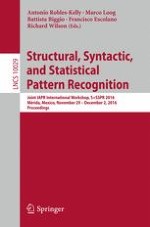
2016 | OriginalPaper | Buchkapitel
P2P Lending Analysis Using the Most Relevant Graph-Based Features
verfasst von : Lixin Cui, Lu Bai, Yue Wang, Xiao Bai, Zhihong Zhang, Edwin R. Hancock
Erschienen in: Structural, Syntactic, and Statistical Pattern Recognition
Aktivieren Sie unsere intelligente Suche, um passende Fachinhalte oder Patente zu finden.
Wählen Sie Textabschnitte aus um mit Künstlicher Intelligenz passenden Patente zu finden. powered by
Markieren Sie Textabschnitte, um KI-gestützt weitere passende Inhalte zu finden. powered by